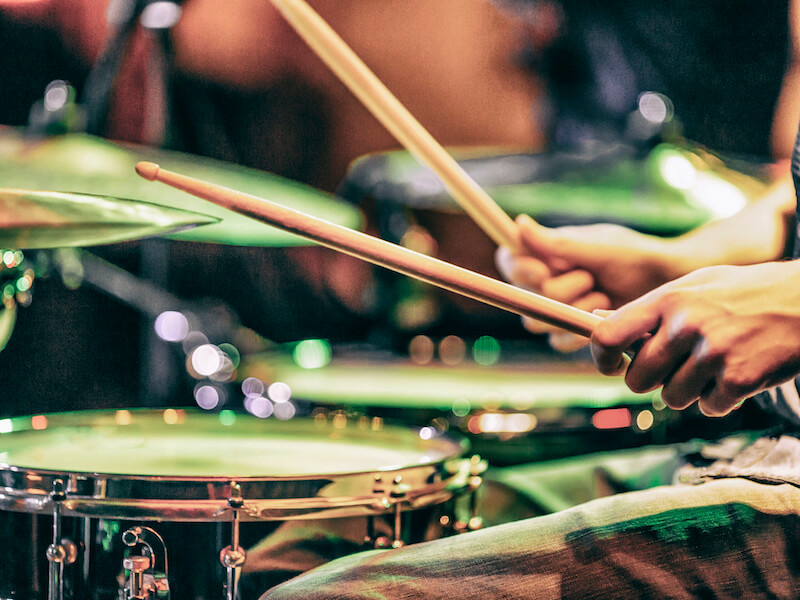
Musicians rock. They bring so much joy to our lives with their songs. The downside is that music is pretty much always loud, in fact, many individuals prefer it that way. The musicians themselves are at an increased risk of hearing damage since they are exposed to loud music just about every day.
Whether your living relies on music or not, you’ll still want to be able to hear your favorite songs when you’re pushing 60, 70, or 80. For musicians, safeguarding their hearing is the key to a lengthy and successful career. For the rest of us, hearing protection is the secret to a lifetime of musical enjoyment and enrichment.
Music is surprisingly loud
If you ask most individuals whether a jet engine is loud, they’ll likely say yes.
Is music actually that loud? If you ask somebody whether an acoustic guitar or a lone violin is loud, they might not answer so quickly. Imagine their surprise when they discover the reality: That can also be very loud music! Your ears can even be harmed by classical music which can get to fairly loud volumes.
A violin, for example, can produce sounds in excess of 90 dB. A leaf blower is around this loud. To put that into context, the European Union laws stipulate that any workplace noisier than 85 dB requires the use of hearing protection.
And if you’re working with music on a daily basis, consistent exposure to that kind of volume, particularly without ear protection, can seriously damage your hearing over time.
How can you safeguard your hearing?
Okay, now you recognize that musicians need to protect their hearing (especially if they want to continue rocking out for many years). So how can musicians keep enjoying their music while also safeguarding their hearing?
Here are a couple of tips:
- Take breaks: Your ears are the same as any other part of your body: they can be overworked and will often benefit from a break. So give yourself “hearing breaks” regularly. This will help stop your ears from becoming overpowered with sound (and damage). With regard to hearing, how long you’re exposed is almost as significant as how high the volume is. The difference between the ideal amount of stimulation and too much can come down to taking regular breaks.
- Track your volume: Everybody knows the old saying “knowledge is power”. So it follows that you should always be aware of what levels of sound you’re exposing your ears to. Keeping track of the volume on amps and PA systems is part of it. But you can also purchase a volume meter app for your cellphone to make it convenient to monitor the real-world volume levels your ears are experiencing day in and day out. You will want to make a few changes if the meter consistently detects volumes louder than 85 dB.
Wear ear protection
Needless to say, the single most beneficial thing you can do to protect your hearing is simple: using hearing protection of some kind. Many musicians are hesitant to wear ear protection because they’re concerned it will effect the quality of sound they hear, as well as muting the volume. But depending on what kind of hearing protection you use, that may not always be accurate.
- Ear plugs made mainly for musicians: Most people are likely acquainted with disposable ear plugs. They don’t always fit well, but they do reliably block a lot of sound. They aren’t hard to get, don’t cost much, and can be disposed of easily. For musicians, they aren’t a great solution. But earplugs made just for musicians are also available at a slightly higher cost. These earplugs use fancy manufacturing methods (mostly they’re made out of very specific materials and are designed to conform nicely to the ear) to preserve audio fidelity while diminishing the noise you hear by something like 20dB. For musicians who need a moderate amount of protection on a budget, this option is perfect.
- Electronic earplugs: The same basic functionality found in non-electronic earplugs can be found in electronic earplugs. The majority of the sound will be blocked by the earplug itself. But the earplug itself will pipe in the sound you hear. For individuals who work in really noisy settings and need better control of the volume, these earplugs are ideal.
- In-ear monitors: The majority of music is electronic nowadays, or at least amplified by electronics. An in-ear monitor takes those electronic signals and sends them directly to a device placed in your ear (called an in-ear monitor). It’s like a specialized little speaker for your ear, and the majority of monitors can block out sound from the outside environment (thanks to a rather tight fit and specialized design). So you control the volume level and are able to hear sound accurately and clearly. For musicians who electronically amplify their instruments these in-ear-monitors are the perfect answer.
Protect your ears, and protect your career
It’s best to start safeguarding your hearing early, before any substantial damage occurs. With options available at just about every price point, there are easy ways for everybody to safeguard their hearing and their future. Keep in mind, hearing protection for a musician is an investment in your career. By doing so, you will be able to enjoy making music for as long as you want to.
Don’t really know where to begin? Contact us today, we can help!
